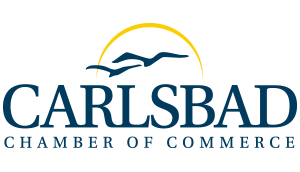By Justin Peek, CFP, AAMS Financial Advisor Edward Jones
July is Independent Retailer Month. As you know, local stores bring vitality, creativity and economic growth to their communities, so it’s worth celebrating those “mom and pop” shops. But they aren’t the only entrepreneurs in the country – about 10 percent of workers in the U.S. are self-employed, according to the U.S. Bureau of Labor Statistics. If you’re thinking of joining these ranks, you may want to prepare yourself financially.
For one thing, you may need to pay more in taxes, depending on your income. Self-employed individuals typically have to pay twice the amount in Social Security and Medicare taxes because they have to cover the portion that employers normally pay.
Also, unless you’re fortunate enough to have a spouse who can put you on their employer-based health insurance, you’ll need to find your own, at least until you’re eligible for Medicare.
Furthermore, you will need to take charge of your own retirement savings. Fortunately, several retirement plans are available to the self-employed. These plans typically offer tax-deferred growth potential and tax-deductible contributions.
Here are a few options to consider:
Owner-only 401(k) — This plan, which is also known as an individual 401(k), is available to self-employed individuals and business owners with no full-time employees other than themselves or a spouse. For 2017, you can put in up to 25 percent of your annual income as an “employer” contribution, and you can defer up to $18,000 (or $24,000 if you’re 50 or older). The sum of your employer contribution and your salary deferrals cannot exceed $54,000, or $60,000 if you’re 50 or older.
SEP IRA — If you have just a few employees or are self-employed with no employees, you may want to consider a SEP IRA. You’ll fund the plan with tax-deductible contributions, and you must cover all eligible employees. As an employer, you can contribute the lesser of 25% of your compensation (if you’re also an employee of your own business) or $54,000.
Solo defined benefit plan — Pension plans, also known as defined benefit plans, are still around — and you can set one up for yourself if you’re self-employed or own your own business. This plan has high contribution limits, which are determined by an actuarial calculation, and, as is the case with other retirement plans, your contributions are typically tax-deductible.
SIMPLE IRA — A SIMPLE IRA, as its name suggests, is easy to setup and maintain, and it can be a good plan if your business has fewer than 10 employees.
Although planning for your retirement is important, you also need to prepare for unanticipated short-term expenses, such as a major car repair or a new furnace. While everyone should be ready to meet these needs, it’s especially important if you’re self-employed and have a variable income. So, work to build an emergency fund containing three to six months’ worth of living expenses, with the money kept in a liquid, low-risk account.
You may find self-employment to be quite rewarding — and you’ll likely enjoy it even more if you make the right financial moves.
On a final note, congratulations to the Carlsbad Chamber of Commerce as it celebrates its 95th anniversary! Coincidentally, it is also the 95th anniversary of my firm, Edward Jones! On behalf of all of our local Financial Advisors, thank you to each and every staff member of the Chamber for all that you do for the Carlsbad business community. Now, go pop open the champagne, you deserve it!
For more information on retirement plans, contact Justin Peek, CFP® at (760) 635-1097 or [email protected].
